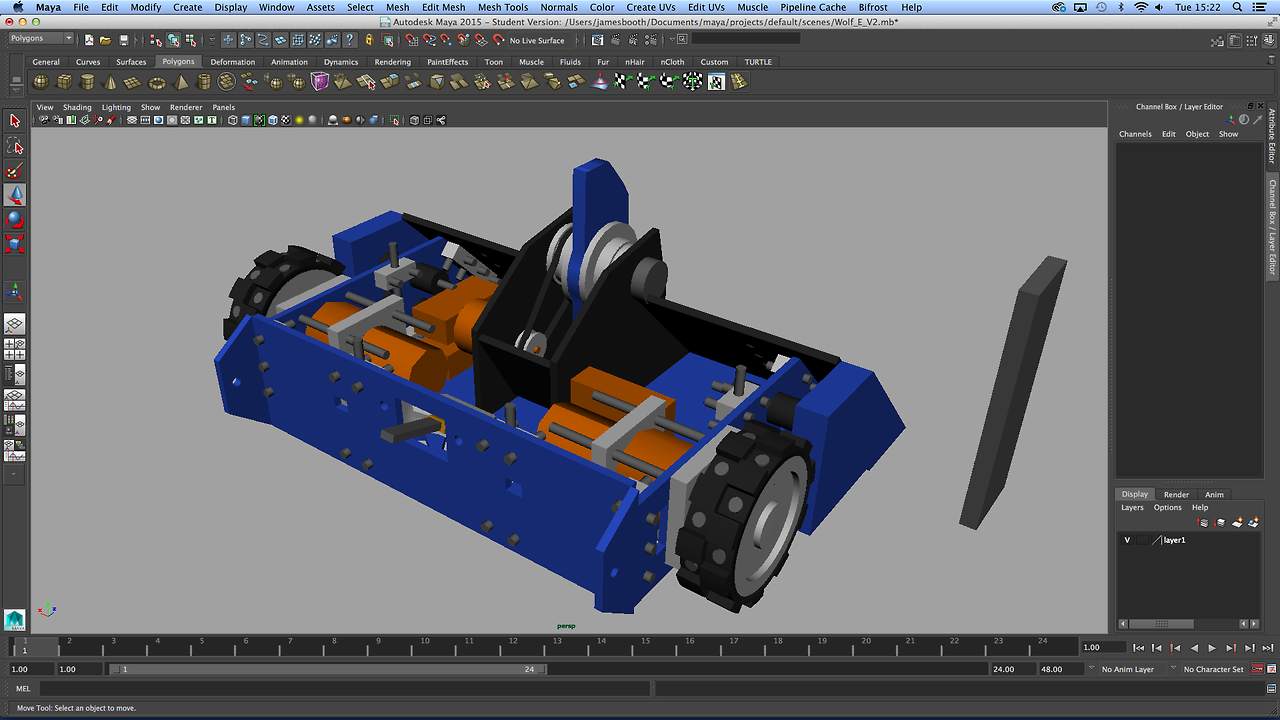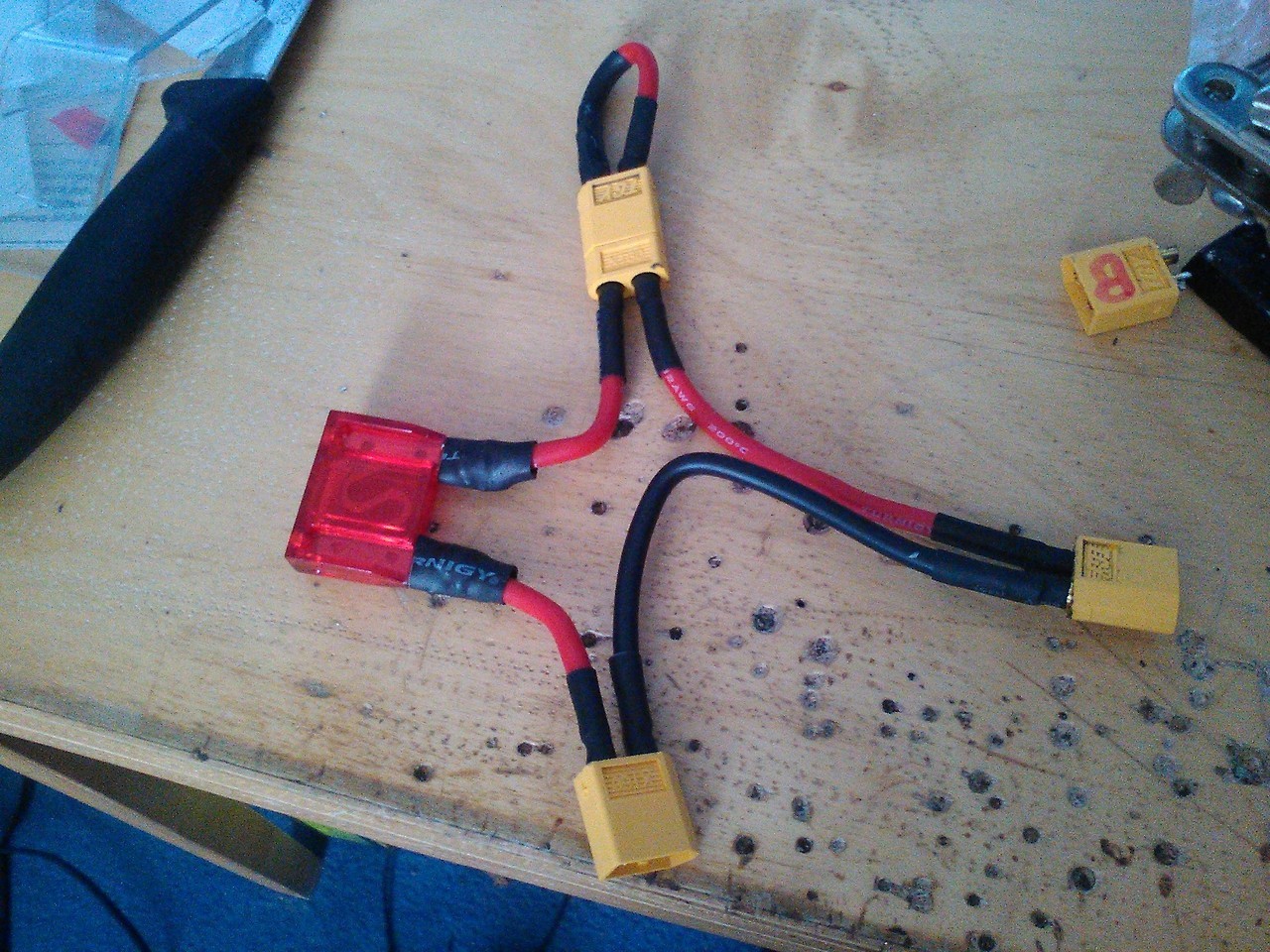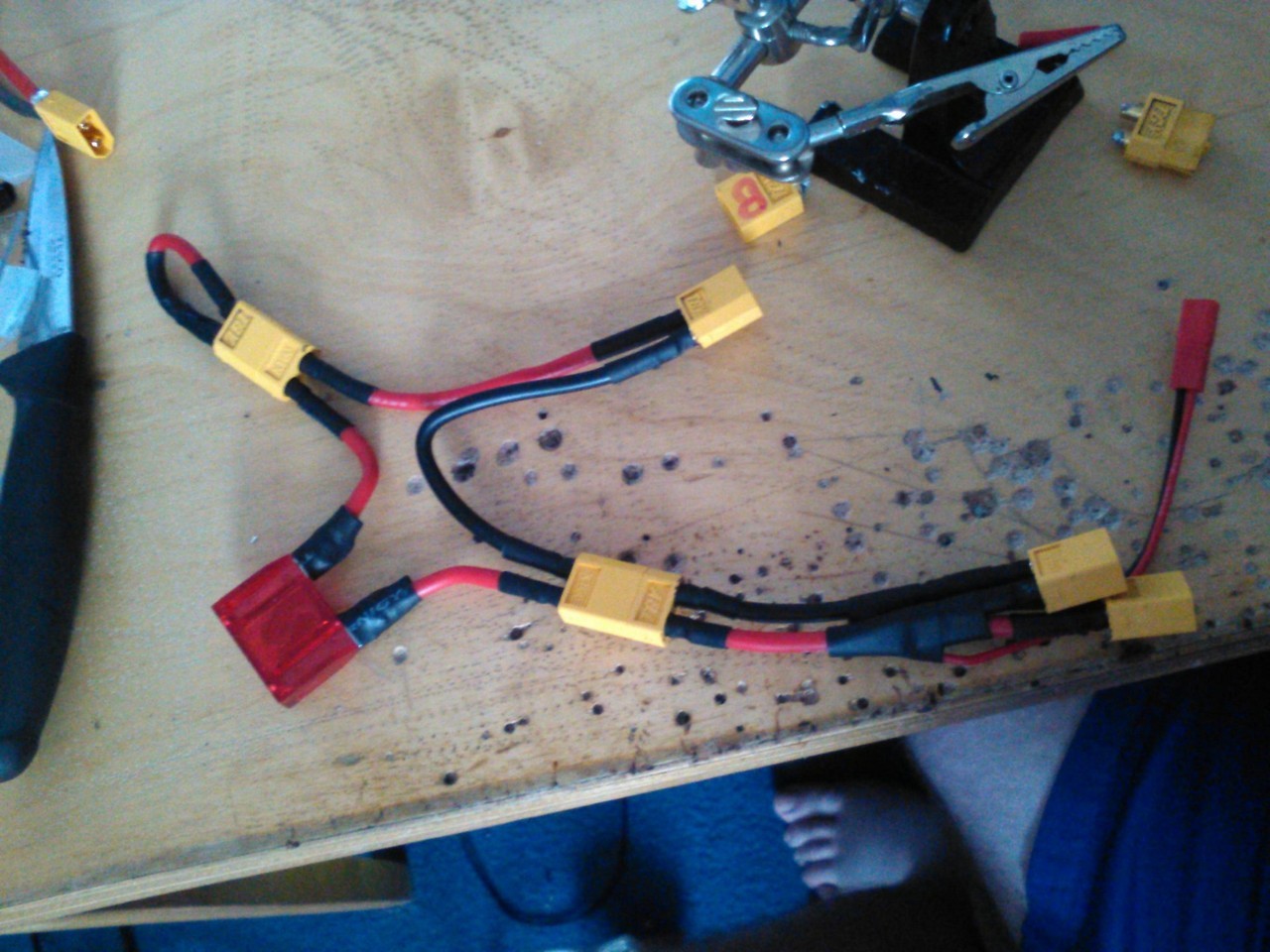Announcement
Collapse
No announcement yet.
Team Coolspeedbot: first feather weight robot
Collapse
X
-
Ok, I think you're going a bit crazy with the squareds. When we put something like 'm^2' or 'm^3' on the end of something, it's just a unit. It basically means that we've already squared it.
For example, let's say I had a square of side length 2m. If I wanted to find the area, I'd do 2 x 2 = 4 m^2, just like if you were to do 2^2 = 4. Basically, you're counting how many square metres (literally 1m by 1m squares) you can fit inside the area that you're measuring. Same with volume, it's how many 1m x 1m x 1m cubes you could fit inside the volume that you're measuring.
So when we write 'm^2' or 'm^3', it's just a unit, you don't use it for calculation, other than making sure that all of your numbers are in the same (or compatible) units when you do the calculations. In your case:
0.28 m x 0.085 m = 0.0238 m^2. (Area in square metres)
0.0238 m^2 x 0.005 m^2 = 0.000119 m^3. (Volume in cubic metres)
0.000119 m^3 x 7850 kg/m^3 = 0.93415 kg (Mass in kilograms)
Just a final bit of useful info, the unit on the end can represent a calculation that was done to get the figure. An obvious example is km/h. If you want to measure the speed of a car, you can drive it for a known distance at a constant speed, and then divide the distance in km by the time it took to travel there. This leaves you with your speed in literally how many kilometres the car can cover per hour, and the unit km/h represents that you're dividing km by hours (km/h). Likewise with density. If you want to figure out the density of steel, you get a certain known volume of it (like a 1m by 1m by 1m cube) and see how much it weighs. You then divide that weight (or mass more accurately) in kg by the volume of the cube to get kg/m^3, literally how many kilograms the material will weigh per cubic metre that you have.Last edited by R9000; 24 May 2017, 15:55.
Leave a comment:
-
Oh I see,
so one of my side panels (as a rectangle) would be 0.28m x 0.085m = 0.0238m^2
then it's 0.0238m^2 x 0.005m = 0.0000028322m^3
Then 0.0000028322^3 x 7850? or is it 7850^3?
= 1.7833698e-13 (1.783kg)?
Leave a comment:
-
No, that's the perimeter. The area is the 2D space the shape takes up. There are different ways to work it out for different shapes, but the easiest way is to split your shapes up into rectangles and then multiply the length by the width.
So if you have a rectangle of 50mm by 120mm, your area is 50 x 120 = 6000 mm^2. Or if you want to get the area in metres, you convert the sides to metres first: 50/1000 = 0.05m, 120/1000 = 0.12m so then 0.05 x 0.12 = 0.006 m^2.
For right-angled triangles, you multiply the two sides together that form the right-angle, and then halve that to get your area.
Once you've found the areas for all your bits, add them together and then multiply that result by the thickness of your material to get volume. Then multiply your volume by the density to get mass.
Leave a comment:
-
It doesn't have those kinds of tools but I could use the grid and mesturing tool to work out the area. Just to check, area is the combined length of the outside of a shape?
Leave a comment:
-
Does Maya have any method for working out area or volume? If it does, area in metres^2 x thickness (0.005m) will give you your volume in m^3, then multiply volume by the density of steel (7850 kg/m^3) to get an fairly accurate estimate of mass.
If you don't have a tool for calculating area or volume in Maya, you could either import it into a CAD program that can, or break the armour down into squares and add the areas up, then proceed as before. Otherwise I can't really give an estimate without measurements on those panels.
Leave a comment:
-
So did some Maths and weight checking and the electronics (ESCs, Motors, cables, battery) and wheels weigh 1.573kg. So I have about 11-12kg left over for chassis, armour, bolts and threaded bars. So as I'm planning to use 5mm Hardox panels, in theory how much weight would be eaten up by it?. Below is a picture of the panels layed out in my software so you can see all the weight saving holes in it. the top and sides can be replaced with HPDE if needed.
Screen Shot 2017-05-24 at 13.10.25.png
Leave a comment:
-
considering the size of fuse sockets I didn't deem it practical.
Leave a comment:
-
May be best to add the fuse in using a fuse socket? Heat from soldering iron can damage the fuse wire inside, unless you don't mind just unsoldering the fuse when it blows, guess less failure points...
Leave a comment:
-
It lives, It lives its working. now I just need to add a body for it.
Leave a comment:
-
thanks, had to do a lot of tweaking to Wolf-E to fit it, so if it can be done it might be Wolf-E II or a new machine.Originally posted by R9000 View PostI like! Reminds me of Fissure.
Reminds me of Fissure.
Leave a comment:
-
Just a fun little spinner concept no idea how accurate to actual spinner inner workings.

Leave a comment:
-
did fine with the spinners but may not reflect real life damage.Originally posted by daveimi View PostDid you run into any problems with spinners and the wheels getting chewed up?
Leave a comment:



Leave a comment: